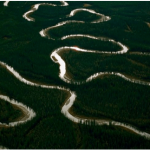Water Leaders gather for First National Dialogue on Community-based Water Monitoring
The first weekend of November, leading lake experts from across North America including academics, citizen monitoring groups and members from all levels of government will converge in Banff, Alberta for the 36th annual North American Lake Management Society Symposium, hosted by Living Lakes Canada and the Alberta Lake Management Society.
As part of the symposium, Living Lakes Canada is also hosting the first ever national dialogue on community-based water monitoring. Community-based monitoring (CBM) is emerging across North America as a compelling approach to help solve some of the challenges associated with watershed management.
People in Canada often assume that freshwater is abundant everywhere but this is not the case: Southern Alberta and the Okanagan region are two areas where water is scarce. Already there are signs of water stress, yet there are still no restrictions on human actions or water use. Modern society has become used to an “engineering” approach to water. We carry out our human activities as we please, and when they have bad consequences for water, experts are called in to fix the problem. This approach to water has not been successful, as a look at national or global statistics will show. An important aspect of citizen science is that it allows people to become more informed about the causes of water problems and do their part to prevent them.
Here in the Columbia Basin, we have several examples of successful community-based water monitoring initiatives: The Lake WIndermere Ambassadors, Friends of Kootenay Lake, a Basin-wide citizen groundwater monitoring project led by Living Lakes Canada, and the Elk River Alliance, to name a few.
“2015 was the hottest year ever recorded in human history and the first six months of 2016 broke all of the 2015 records,” said Kat Hartwig, Director of Living Lakes Canada. “The management and allocation of water in an era of climate change will be one of the greatest challenges facing humanity. Community-based water monitoring is a way to empower citizens to help collect water data and support informed decision-making about water allocation and use. This will be an era when we will need all hands on deck.”
The dialogue at the NALMS symposium will be an interactive, full-day workshop and is about building bridges: connecting citizen scientists with some of the world’s leading water scientists to generate recommendations on how to move forward on citizen science water monitoring nationally. A diverse panel of experts, including limnologist Dr. David Schindler and watershed management expert Dr. Hans Schreier, as well as indigenous and non-indigenous community water managers, will dive deep into the issues and challenges and participants will learn from leading best practice examples from across the continent.
“If done well and with scientific rigour, I can see the potential of citizen science in monitoring water,” said Dr. David Schindler. “It will certainly require training and scientific oversight but will likely be necessary since Lack of government action has been a real problem in dealing with all water issues. Few politicians have any background in science, and as a result they ignore environmental problems. At present we see governments ignoring water problems connected to damming rivers, new pollutant sources near watercourses, and many other areas. Citizen science is a step in the right direction. Perhaps there will be a day when politicians are required to have literacy in the portfolios that they handle. We expect cabinet ministers to be bilingual, so it seems reasonable for those handling environmental portfolios to be scientifically literate in order to make sound policy





